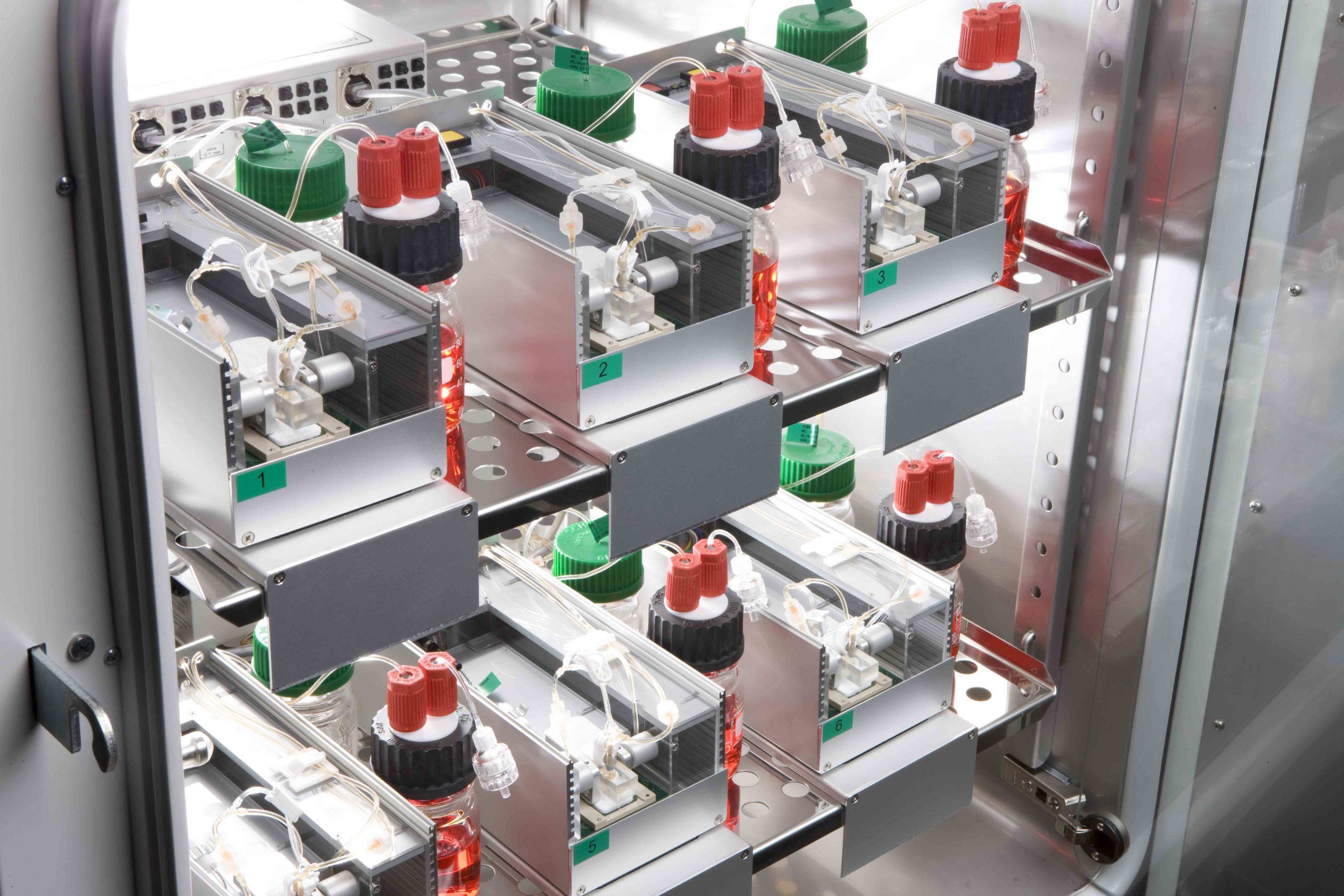
Having already shown what is possible in the fields of toxicology and medicine thanks to new technology without animal experiments, the last part of our series deals with basic research and the environment.
Using living cells as sensors to detect contamination at an early stage and prevent further contamination, opens up completely new possibilities for environmental protection. This is already possible because the lab-on-a-chip systems can be used to monitor water quality using only algae as signal converters.
“We can not only add human or animal cells to the chip, but also, for example, algae and thus also water monitoring,” says Dr. Joachim Wiest, Managing Director of cellasys GmbH in Munich. “You can take algae, irradiate them with a light source, photosynthesis takes place and the algae produce oxygen, which we can measure with our chip. Then they’ll be fine.”

© cellasys
However, as soon as the water is polluted for some reason or herbicides are washed in, for example because a field next door has been fertilized and this has reached the surface water, the photosynthesis rate immediately decreases, he explains. “It’s obvious with our system.” Unfortunately, there is no market for his technology in this field, as it is too expensive. “Nobody pays 2,000 euros for a water analysis.”
Apart from rivers and lakes, there is much more that can be tested with water, namely the quality of fruit and vegetables by examining the washing water. “It has been shown that the washing water of fruits can be analyzed. Fungicides, herbicides, pesticides and everything else was found there,” said Wiest. “It’s similar to water monitoring. If the food is washed until there is nothing left in the washing water, the food, of course, is also clean. We can analyze this wash water as well as surface water.”
However, water pollution and the “poisoning” of food do not only happen directly, as contamination by wastewater or pesticides does. The rain alone, which gets on apples, pears and vegetables, contains all the toxins that are also in the air. Exactly this air pollution is also a reason why more and more research is being done into alternative fuels.
“At the moment, a lot of research is being done into the use of algae, for example, to produce fuels or feed,” said Wiest. “Algae are also ‘living cells’ and we can optimize the medium with which the algae are fed. If we have algae on the system, we can very quickly see what we have to feed them to make them really well. Under laboratory conditions, these algae can then, for example, produce ethanol.”
Read the whole series about cellasys HERE
Wound healing ointments that work
Food additives or dietary supplements, which can be monitored for interactions between cells and additives, have long been part of nutrition. “We had a project in which we investigated how food supplements affect intestinal bacteria,” says Wiest. “I can investigate the interaction between the living model and the supplement.”
Procedures, as already mentioned in the testing of cosmetics, are also applied to products that are used again and again in daily life and for which one hardly thinks about the fact that each individual one must first be subjected to extensive tests before it comes onto the market. It must be proven that detergents, soaps, paints, varnishes and the like are not harmful to health. This, too, is generally tested on animals, research that could just as well be carried out on immortalised cells with lab on a chip.

The same applies to the efficacy tests of new drugs. “For example, one can determine how well an ointment works. If I add a certain ointment, I can see whether the cells divide faster and the healing process in humans progresses faster. A typical test example for testing wound healing ointments is cutting cells on a glass plate and observing under the microscope how quickly they grow together again.” The same applies to drug tests, says Wiest, in which it is possible to recognise at a very early stage which drug is unsuitable because, for example, it destroys the liver.
“If one has technology at the interface between electrical engineering and the living system and can thus read out living cells, it is possible to carry out basic research,” explains Wiest, citing the investigations involving pancreatic cells as an example. “There were scientists who said hey, you can read cells, so can you also evaluate beta cells for how vital they are so we know if they can be transplanted or not?”
Like so many other research projects, however, this was just a research project and is not applied commercially. “At present, no pancreatic cells are transplanted into humans. This was a research project in which we were able to show that it is possible to differentiate between vital and less vital cells.” So there is still hope for the future…

